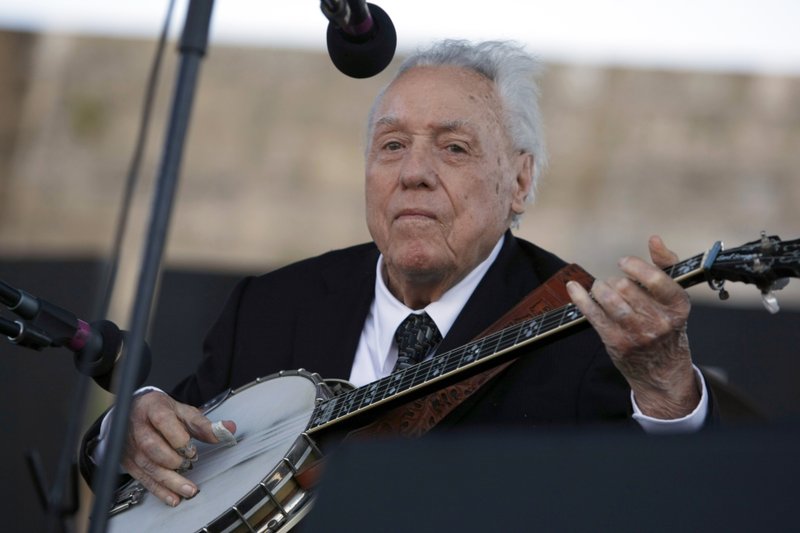LITTLE ROCK — Earl Scruggs, the bluegrass banjo player whose hard-driving picking style influenced a generation of players and helped shape the sound of 20th-century country music, died Wednesday in Nashville, Tenn.
Scruggs, born on Jan. 6, 1924, in Flint Hill, near Shelby, N.C., died at a hospital of natural causes, his son Gary said. He was 88.
His father, George Elam Scruggs, was a farmer and bookkeeper, and his mother, the former Georgia Lula Ruppe, played the pump organ in church. He attended high school in Boiling Springs, N.C.
Scruggs was probably best known for performing alongside guitarist Lester Flatt with the Foggy Mountain Boys.
Among their signature songs were “Foggy Mountain Breakdown,” which was used as the getaway music in the 1967 film Bonnie and Clyde, and the “The Ballad of Jed Clampett,” which served as the theme song of the 1960s television sitcom The Beverly Hillbillies.
Scruggs, born on a North Carolina farm to a large family of musicians, took up the banjo at age 4, about the time his father, who also played the banjo, died. He also learned to play guitar, modeling his style after Mother Maybelle Carter of the Carter Family.
With little else but chores to occupy him on a Depression-era farm, he became obsessed with the banjo, picking with two fingers. One day when he was about 10, alone in his bedroom and brooding about an argument with an older brother, he began to pick “Lonesome Reuben” (or “Reuben’s Train”) with his thumb, index and middle finger, a style indigenous to North Carolina.
By tuning his banjo in different keys, he found he could play any tune, but the notes sounded undifferentiated at first.
“I can’t hear the melody,” he recalled his mother telling him. So he learned to emphasize melody by plucking it with his strong thumb in syncopation with harmonic notes picked with his first two fingers. The sound was like thumbtacks plinking rhythmically on a tin roof.
The technique lent a harder edge to the bluegrass sound — named after Bill Monroe’s band, the Blue Grass Boys — which Jon Pareles, writing in The New York Times, characterized as “a fusion of American music: gospel harmony and Celtic fiddling, blues and folk songs, Tin Pan Alley pop and jazz-tinged improvisations.”
At one of Monroe’s Grand Ole Opry concerts in 1946, Scruggs met Louise Certain, an accountant living in Nashville. The couple married two years later and had three boys: Gary, born in 1949; Randy, in 1953, and Steve, in 1958. She died in 2006 at 78. Scruggs is survived by sons Gary and Randy.
Information for this article was contributed by David Wilson of Bloomberg News and by Chris Talbott and Joe Edwards of The Associated Press.
Front Section, Pages 2 on 03/29/2012
